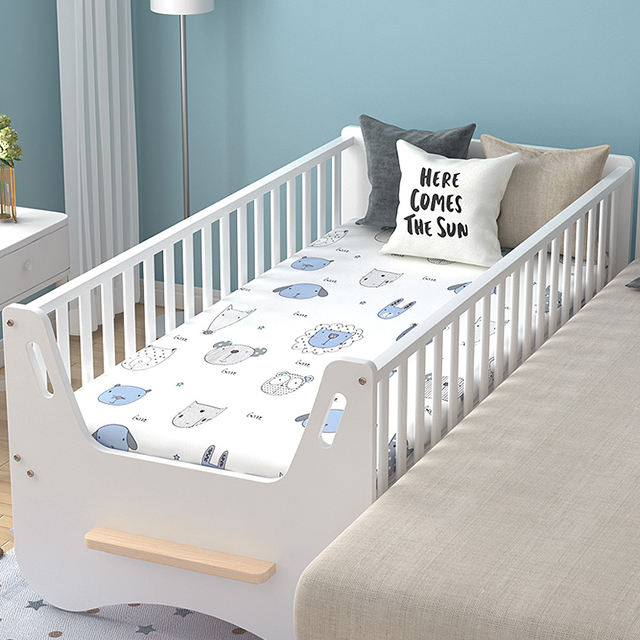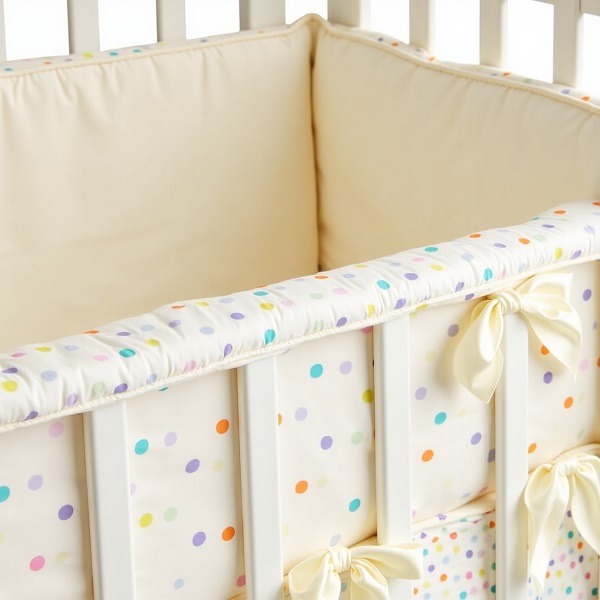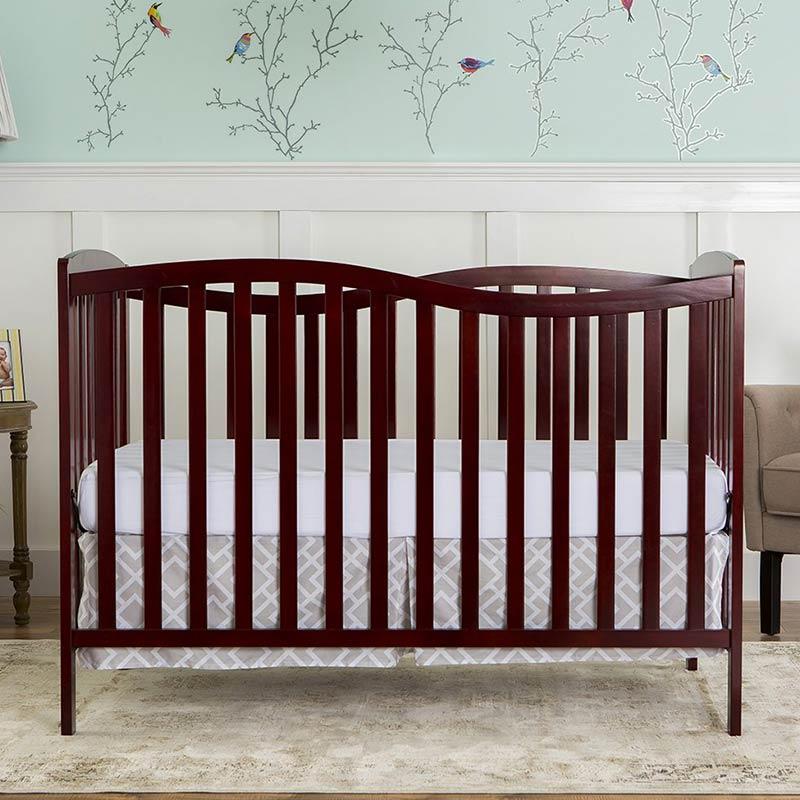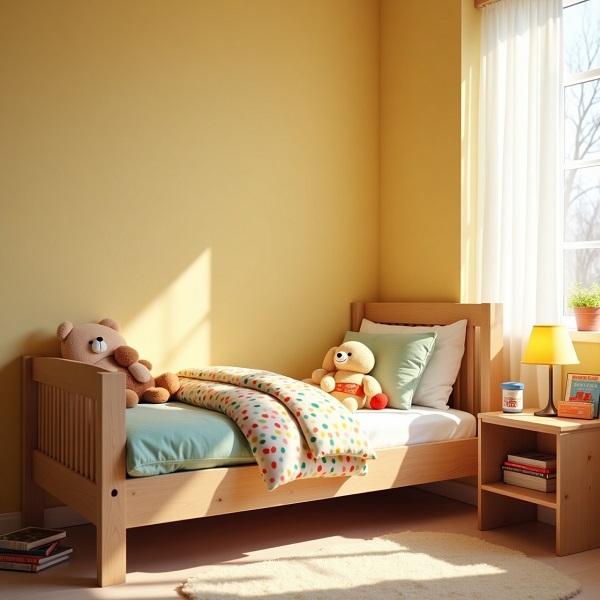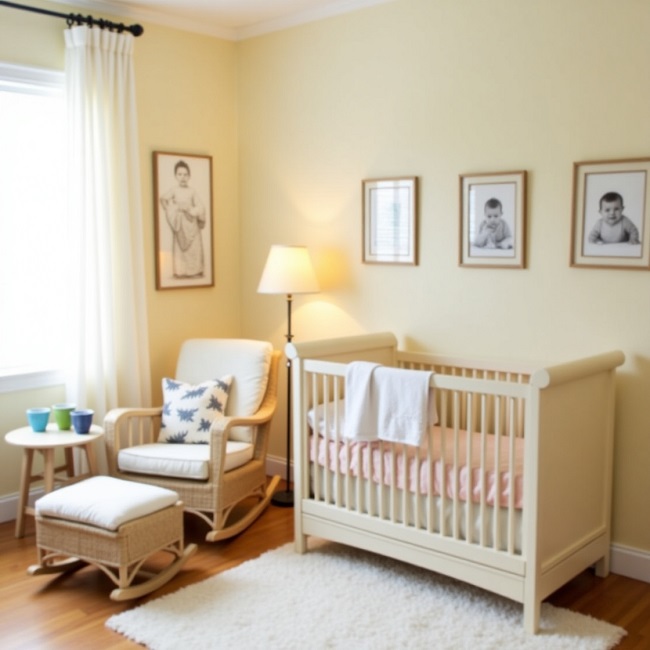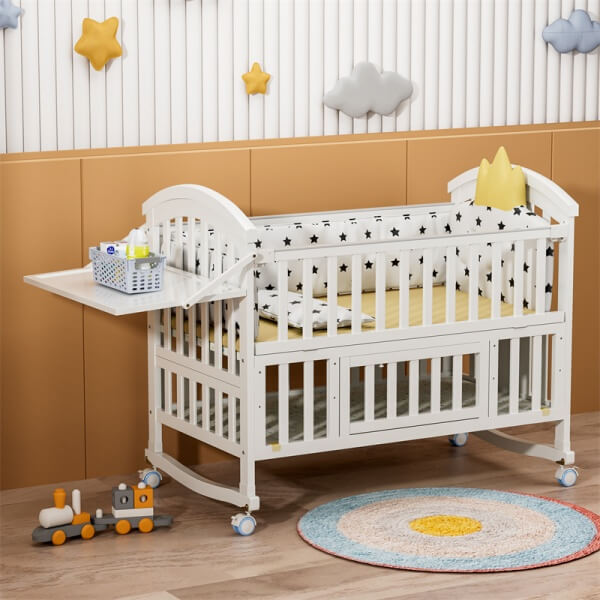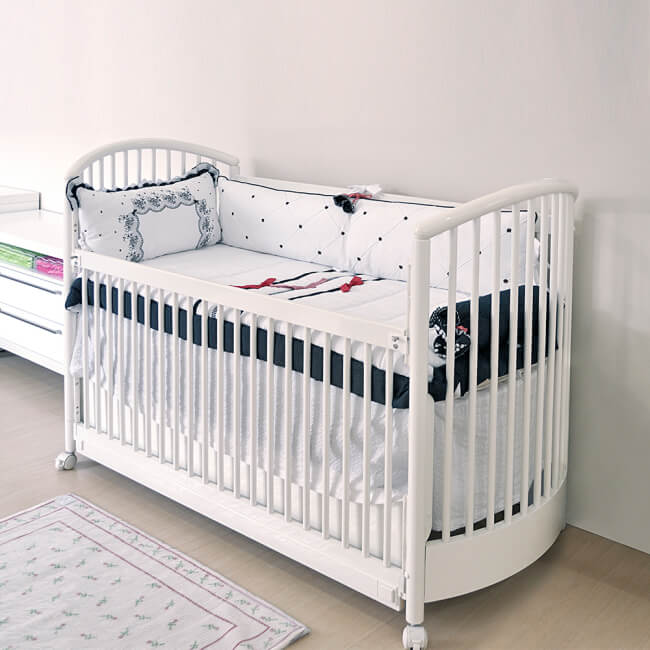As a parent, you may wonder when to transition your child from a crib to a toddler bed. This transition means not only growth for your child but also a new level of independence and freedom.
In this comprehensive guide, we’ll explore when the ideal time is to make the switch, the factors to consider, and the strategies to ensure a smooth and successful transition.
Is a Toddler Bed Really Necessary?
As a parent, you may be wondering if a toddler bed is truly necessary or if it’s simply an unnecessary expense. The truth is, while not an absolute requirement, a toddler bed can serve as a helpful transitional step between a crib and a full-size bed.
Standard cribs are usually designed with high fences, suitable for infants who cannot move independently, but as children’s motor skills develop (such as climbing and standing), cribs may gradually expose safety hazards.
The height of toddler beds is usually reduced to 30-40 cm, allowing toddlers to get in and out of the bed independently while retaining some protective fences.
Many parents choose to skip the toddler bed phase altogether, opting to transition their child directly from a crib to a children’s bed or twin bed. It is worth noting that toddler beds still retain the necessary guardrails (at least on one side), which is safer than transitioning directly to a regular bed.
In addition, a toddler bed can offer a sense of familiarity and security, making the transition smoother for some children.
Best Age to Transition from a Crib to a Toddler Bed
Determining the right time to transition your child from a crib to a toddler bed can be a bit of a guessing game. Every child is different, and there’s no one-size-fits-all answer.
The US CPSC stipulates that it should not be earlier than 15 months, while most pediatricians recommend that the transition be completed between 2 and 3 years old. However, most families will likely choose to transition from a crib to a toddler bed between 18 months and 3 years of age.
Signs Your Toddler Is Ready for a Toddler Bed
When your child shows the following signs, and continually lowering the crib mattress no longer ensures safety and comfort, it’s time to consider transitioning.
1. Physical Development Indicators
- Height and weight threshold: When the child stands, the height of the clavicle exceeds the top of the bed rail by 5cm (usually corresponding to a height of more than 85cm). The weight exceeds the load capacity of the crib (usually 15kg), and the weight of the bedding needs to be considered.
- Motor ability: Able to complete the action of jumping over the fence or using the mattress to bounce, your child is trying to climb out of the crib.
- Toilet needs: Your child begins nighttime toilet training and has the ability to get in and out of bed independently.
2. Psychological Readiness Signs
- Show resistance to the existing sleeping space (slapping the fence, crying, and refusing to sleep)
- Interest in “big kid beds” or showing interest in sleeping in the bed like their older brothers, sisters, or friends.
- Your child can sleep through the night and no longer needs frequent nighttime feedings or diaper changes
- Consider your child’s overall development, including language skills, cognitive abilities, and emotional maturity. Able to understand and follow basic safety rules (such as the “lie down to sleep” command).
The choice of transition timing is essentially a dynamic balance between safety needs and development needs. Parents are advised to make rational decisions based on the individual development rhythm of their children and environmental conditions.
It is worth noting that about 15% of children will experience staged sleep regression, which is a normal adaptation process and requires consistency in parenting strategies.
How to Do Transition to a Toddler Bed?
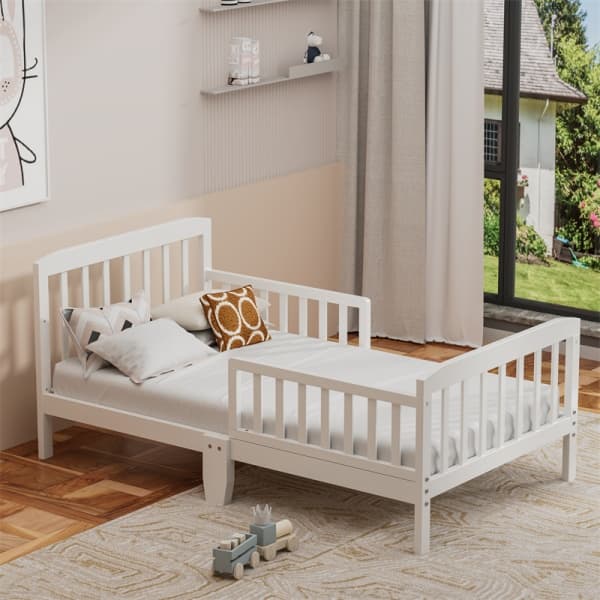
Introduce the Idea
Begin by talking to your toddler about the transition to a toddler bed. Use positive language and explain that they are growing up and getting their own special bed.
Make your child feel involved and excited about the transition by letting them help choose their new bedding or bed frame. Take them shopping with you, if possible, and let them pick out their favorite colors or characters.
Choose the Right Time
Pick a time to make the transition when there are no major disruptions or changes happening in your toddler’s life. Avoid making the transition during times of stress or upheaval, such as moving to a new house or starting daycare.
Prepare the New Bed
Set up the toddler bed in your toddler’s room, ideally in the same spot where the crib was located. Ensure the bed is properly secured, with guardrails in place to prevent any accidental falls. You can also add familiar elements like stuffed animals or blankets to help your toddler feel comfortable in their new sleep space.
Gradual Transition
A sudden change may cause resistance from your child. You can refer to the following phased implementation strategy:
- 1. Nap adaptation period (weeks 1-2): Keep the baby sleeping in the crib at night, only move the nap to the toddler bed, and use daytime light and activity noise to reduce anxiety.
- 2. Night transition period (weeks 3-4): Use the “gradual withdrawal method”: sit by the bed until falling asleep in the first week, move to the door in the second week, and answer outside the door in the third week to gradually build a sense of security.
- 3. Consolidation period (weeks 5-8): Deal with night waking problems: If the baby leaves the bed at night, use the “silent return method” – no conversation, no eye contact, and calmly guide the baby back to bed.
Provide Reassurance and Comfort
Expect some resistance from toddlers as they adjust to change, and be ready to face challenges during the transition phase.
Keep a close eye on your child during the transition period, especially during the first few nights in the new bed. Offer comfort and reassurance if they wake up during the night, and be prepared to provide extra support if needed.
How Long Can a Toddler Bed Be Used?
Based on growth charts provided by the Centers for Disease Control and Prevention (CDC), children often undergo substantial growth during their early developmental stages. Around the age of 5, many children surpass the dimensions of a toddler bed, typically smaller than a single bed.
When a child’s height exceeds 140cm (usually 4-5 years old), a standard toddler bed (inner diameter 70x140cm) will not be able to meet the stretching needs, and the risk of scoliosis increases by 2.3 times.
Most toddler beds have a maximum load of 50kg, and exceeding this limit may cause structural deformation (metal frame) or cracking of mortise and tenon joints (solid wood structure).
Research published in the journal “Sleep Medicine Reviews” highlights the importance of sufficient sleep space in promoting optimal sleep quality and minimizing sleep disruptions in children. If your child’s legs extend beyond the edge of the toddler bed or they feel confined during sleep, it could indicate the need for a larger sleeping area.
Switching to a single bed offers children more room to move comfortably during sleep, potentially enhancing their overall sleep experience.
Is a Floor Bed Better Than a Toddler Bed?
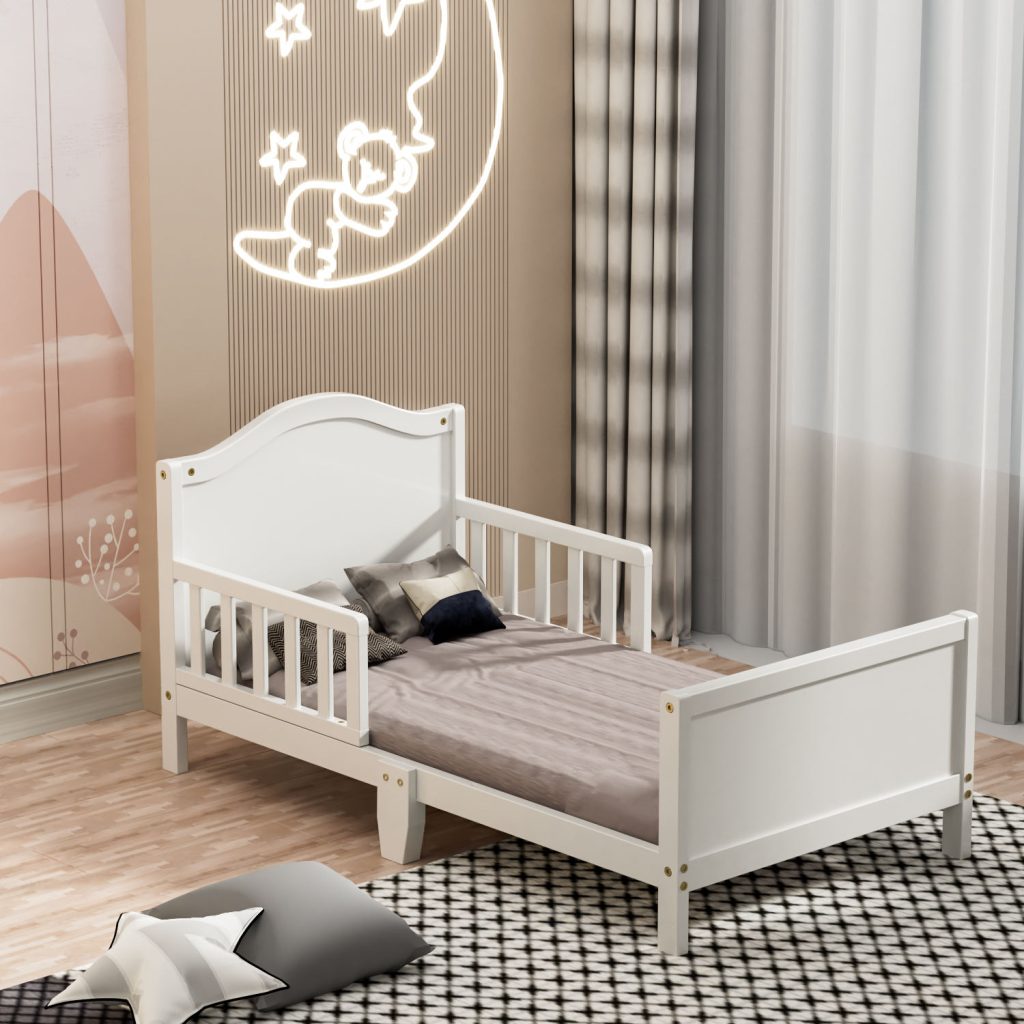
When it comes to transitioning from a crib, some parents opt for a floor bed instead of a traditional toddler bed. A floor bed is exactly what it sounds like – a mattress placed directly on the floor, often with minimal or no frame. This approach has become increasingly popular in recent times, with numerous advocates highlighting its advantages.
- Safety: With no elevated surfaces, a floor bed eliminates the risk of falls, which can be a concern with toddler beds, especially during the initial transition phase.
- Independence: Floor beds allow children to get in and out of bed independently from an early age, fostering a sense of autonomy and confidence.
- Flexibility: Floor beds can be easily moved or rearranged as needed, making them a versatile option for small spaces or changing room layouts.
- Cost-Effective: Compared to purchasing a separate toddler bed, a floor bed simply requires a mattress, which can be a more budget-friendly option.
However, toddler floor beds also have their drawbacks. They may not provide the same sense of security and containment as a crib or toddler bed with rails, which some children may find unsettling. Additionally, floor beds can be more challenging to keep clean and may not be as visually appealing as a traditional bed setup.
Both toddler beds and floor beds have their own unique advantages. The right choice for your child will depend on their developmental stage, personality, and your parenting philosophy.
Safety Precautions for Sleeping in a Toddler’s Bed
Use Safety Rails: Most toddler beds come with removable safety rails on one or both sides. Keep these rails in place until your child is comfortable and understands the boundaries of their new bed.
Clear the Area: Remove any potential hazards or clutter from the area around the bed to prevent tripping or injuries if your child gets out of bed during the night.
Childproof the Room: Install safety gates, secure furniture to the walls, and cover electrical outlets to create a safe and secure sleeping environment.
Use Appropriate Bedding: Choose fitted sheets and lightweight blankets or sleep sacks to minimize the risk of entanglement or suffocation.
Supervise Nap Times: During the initial transition period, consider supervising or checking on your child frequently during nap times to ensure their safety and provide reassurance.
Establish Boundaries: Teach your child the importance of staying in their bed until you come to get them in the morning or after nap time.
How to Develop Good Sleeping Habits in Children?
Create a predictable and calming routine that signals to your child’s body and mind that it’s time to wind down for sleep. This could include activities like taking a warm bath, reading a bedtime story, or singing lullabies.
Ensure your child’s bedroom is cool, dark, and quiet – conditions that promote restful sleep. Consider using blackout curtains, a white noise machine, or a nightlight if needed.
Avoid exposing your child to screens, such as TVs, computers, tablets, or smartphones, in the hour leading up to bedtime. The blue light emitted by screens can interfere with the production of melatonin, the hormone that regulates sleep-wake cycles.
Regular physical activity during the day can help children expend energy and promote better sleep at night. Encourage active play and outdoor activities during the day, but avoid vigorous exercise close to bedtime, as it can be stimulating.
Be mindful of your child’s food and drink intake, especially in the evening hours. Avoid giving them large meals, caffeinated beverages, or sugary snacks close to bedtime, as these can interfere with sleep.
Set a regular bedtime that allows your child to get enough sleep each night, based on their age and individual needs. Stick to this bedtime as much as possible, even on weekends and holidays.
Conclusion
The transition from a crib to a toddler bed, and eventually to a twin bed, is a significant milestone in your child’s development. While there is no one-size-fits-all approach, paying attention to your child’s cues, involving them in the process, and prioritizing safety can make this change a positive and empowering experience for both you and your little one.
If you’re considering making the transition to a toddler bed or have any concerns about your child’s sleeping arrangements, don’t hesitate to consult with your pediatrician or a trusted childcare professional. They can provide valuable guidance and insights tailored to your child’s unique needs and development.

